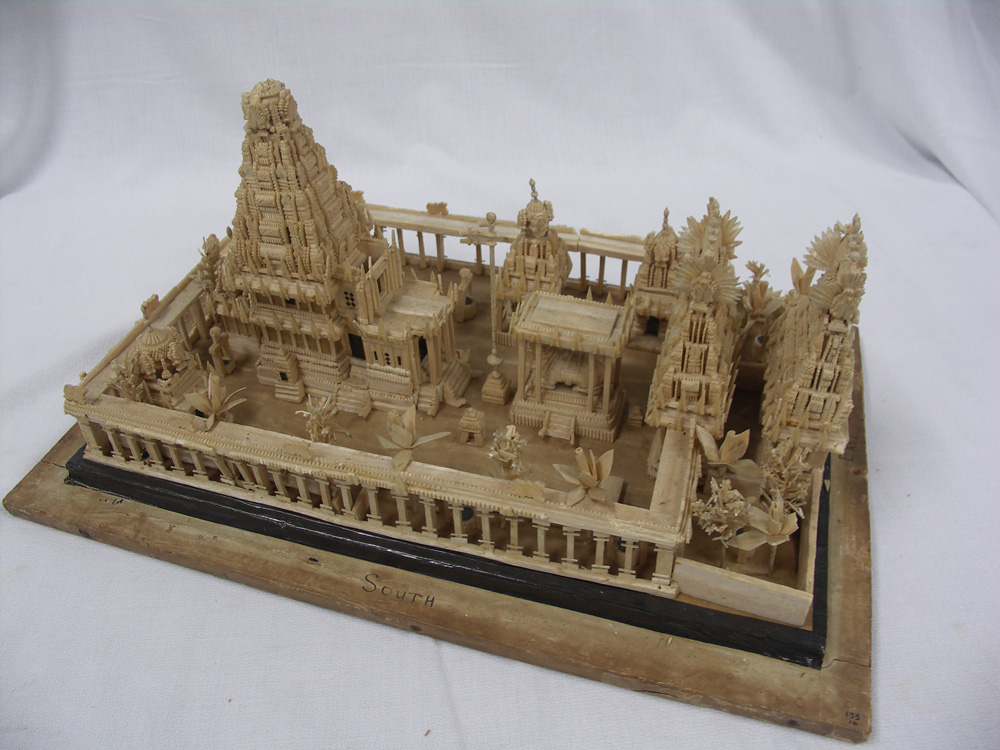September 14, 2012
Artifact: Hindu Temple (model)
 Size: 18 x 12 x 8.5 inches
Size: 18 x 12 x 8.5 inches
Date: ca. 1930s
Significance: This model, made of bamboo pith, was constructed by a native of India and donated to the Institute by the Rev. Paul F. Henkel, a missionary. India was the Missouri Synodʼs first mission field on foreign soil, begun by Karl Naether in 1895. Today (September 14) is the 146th anniversary of Naetherʼs birth.
About Karl Naether: Born in Saxony on 14 September 1866, Karl Gustav Theodor Naether knew he wanted to become a missionary at a young age. He was trained by the Leipzig Mission Society and sent to India at age twenty-one. He, along with Franz Mohn, left the mission in 1893 over doctrinal differences. After joining the Missouri Synod, the two were sent back to India as missionaries. Naether chose to start a mission in Krishnagiri, in the Salem District of Madras Province. His work had little success at first, and the difficulties caused him to have doubts. By 1900, however, Naether had signs that the seeds he had sown were bearing fruit – two teachers in the school he had opened asked for catechism instruction for themselves and their families.
 Naether married Johanna Naumann in October 1895, and they had five children, though the two oldest died in 1899. Naetherʼs mission work ended abruptly when he died of the plague on 13 February 1904, five months before the birth of his youngest daughter. After his death, the Krishnagiri mission continued and grew through the work of his fellow missionaries, including his brother-in-law, George Naumann.
Naether married Johanna Naumann in October 1895, and they had five children, though the two oldest died in 1899. Naetherʼs mission work ended abruptly when he died of the plague on 13 February 1904, five months before the birth of his youngest daughter. After his death, the Krishnagiri mission continued and grew through the work of his fellow missionaries, including his brother-in-law, George Naumann.
Visit the Concordia Historical Institute Museum at the LCMS International Center to learn more about the mission work in India and to see additional artifacts.


